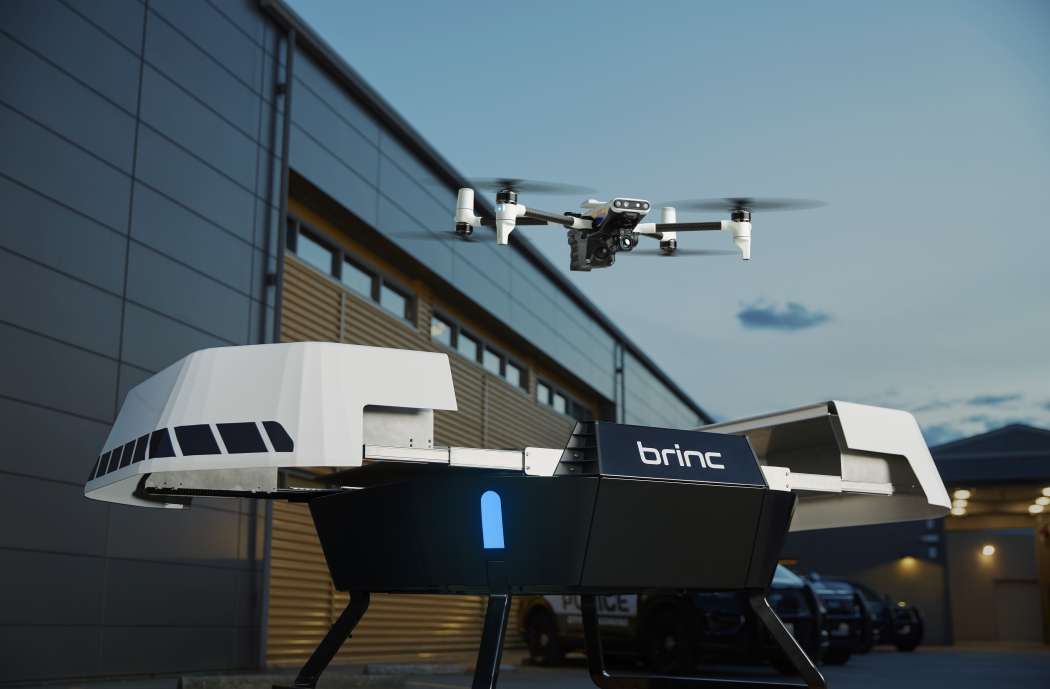Brinc drone takes off as first responder in accidents
New device deploys with red and blue lights and sirens blaring and informs emergency services.
The new Brinc responder drone flies to the scene of an accident and autonomously reports what exactly has happened. It is equipped with a high-resolution and thermal imaging camera for this purpose. Microphones enable the rescue workers in the operations center to get an acoustic picture. Injured persons can also communicate directly with the human helpers. This information helps rescue workers to bring the necessary personnel and equipment to the scene of the accident by conventional means, possibly even the helicopter if it is clear that there are serious injuries.Take off in five seconds
The drone is equipped like a rescue vehicle with flashing red and blue lights, a siren and a spotlight. The versatile aircraft is to be stationed at strategically important points. It docks there at a charging station so that the batteries are always charged. If an emergency call is received, it can take off within five seconds and be at the scene of an accident in 70 seconds at the latest.
Depending on the incident, the drone is equipped with the appropriate payload, such as a defibrillator if it is foreseeable that a person will need resuscitation, a buoyancy aid in the event of an accident in a body of water, or naloxone for the treatment of opioid overdoses.
Battery for 42-minute flights
The drone is also to be used as a first informant after crimes, such as burglaries. It can clarify what has happened and whether there are still perpetrators on site without endangering police officers. In the event of fights or assaults on the street, the drone will provide information on the personnel and equipment required by the police officers, such as whether bulletproof vests need to be worn.
The quadcopter can fly for up to 42 minutes at a time. According to the manufacturer, it only takes 40 minutes to recharge its battery. The new aircraft can fly autonomously with the help of a collision avoidance system and a navigation device, or can be controlled remotely, according to a final statement.
Video: https://www.youtube.com/watch?v=ndU0Con2pu0










